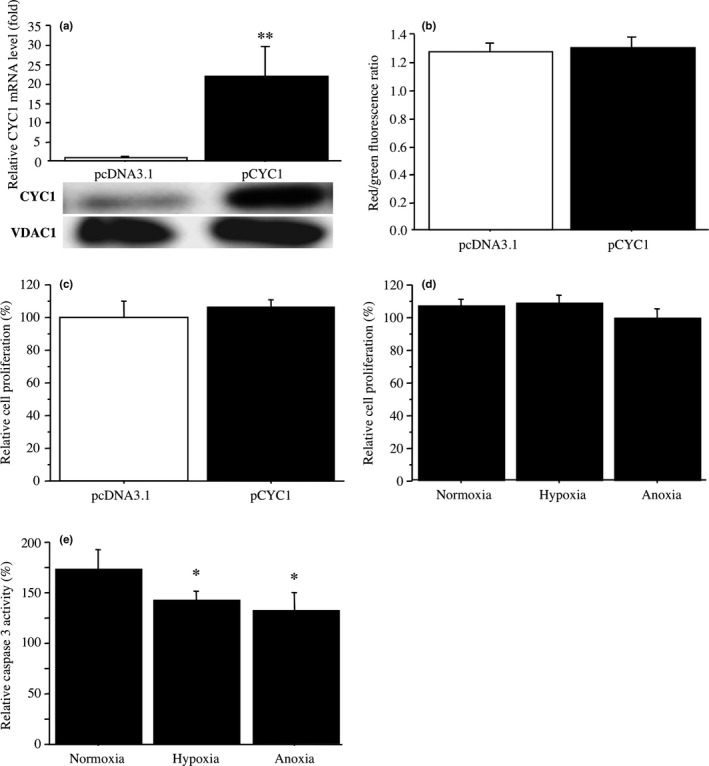Figure 5.

Effects of cytochrome c1 (CYC1) overexpression on mitochondrial membrane potential, cell proliferation, and caspase 3 activity under hypoxia in MCF10DCIS.com ductal carcinoma in situ cells. (a) Upper panel, expression of CYC1 mRNA in MCF10DCIS.com cells transfected with CYC1 plasmid (pCYC1; closed bar) or control plasmid (pcDNA3.1; open bar) by real‐time PCR. Lower panel, corresponding CYC1 immunoreactivity by immunoblotting. (b) JC‐1 assays in MCF10DCIS.com cells transfected with CYC1 plasmid (closed bar) or control plasmid (open bar). Mitochondrial membrane potential was evaluated by red/green fluorescence ratio. (c) WST‐8 assay in MCF10DCIS.com cells transfected with CYC1 plasmid (closed bar). Relative proliferative activity of these cells was summarized as a ratio (%) compared to control cells transfected with control plasmid (closed bar) at 2 days after treatment. (d) WST‐8 assay in MCF10DCIS.com cells transfected with CYC1 plasmid under normoxia, hypoxia, or anoxia for 2 days. Relative cell proliferation activity was evaluated as a ratio (%) compared to the mean value of control cells transfected with control plasmid under the same condition. (e) Caspase 3 activity assays in MCF10DCIS.com cells transfected with CYC1 plasmid under normoxia, hypoxia, or anoxia for 5 h. Relative caspase 3 activity was evaluated as a ratio (%) compared to the mean value of control cells transfected with control plasmid under the same conditions. Data are presented as mean ± SD (n = 3). Statistical analyses were carried out using Fisher's PLSD test. *P < 0.05; **P < 0.01 versus left bar.
